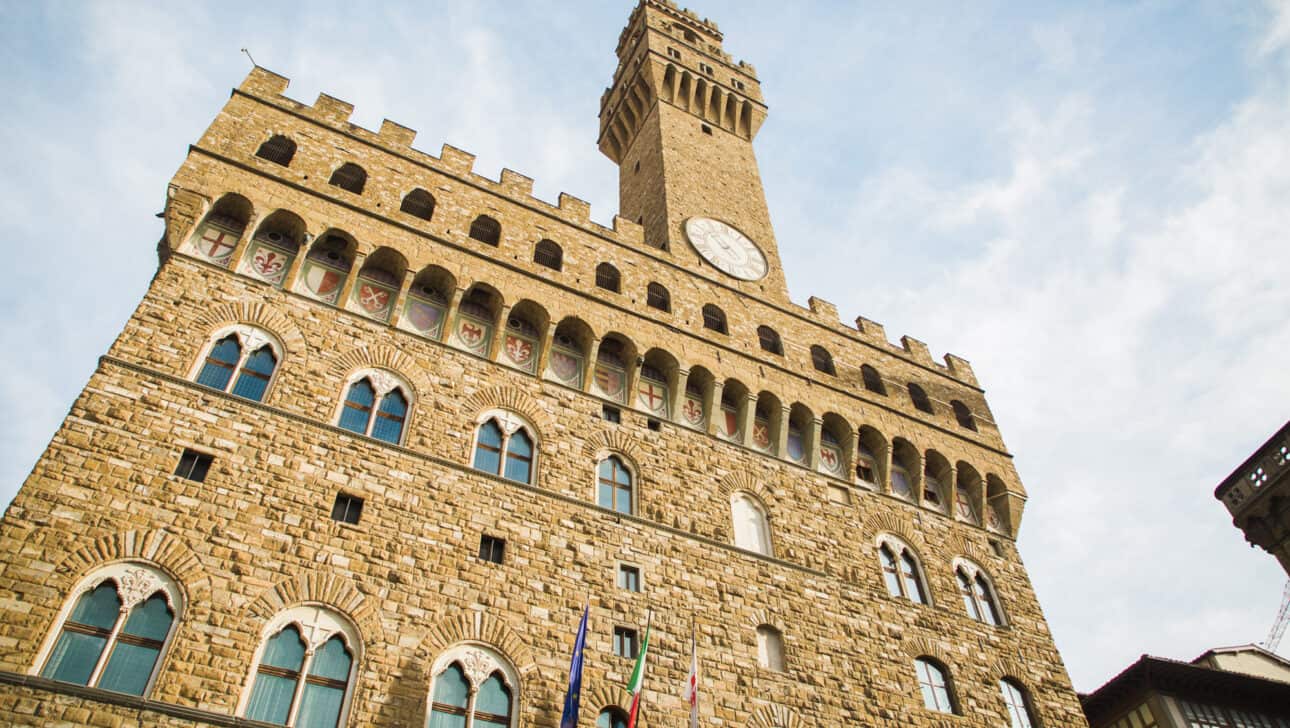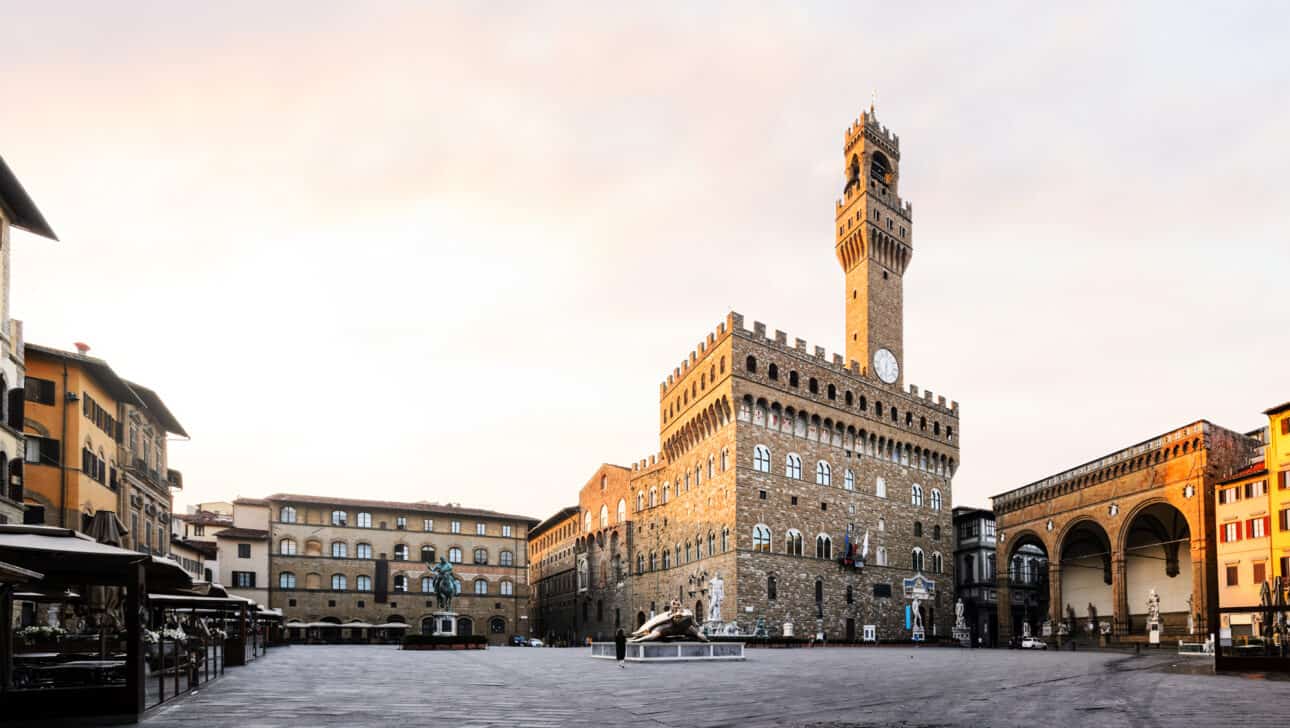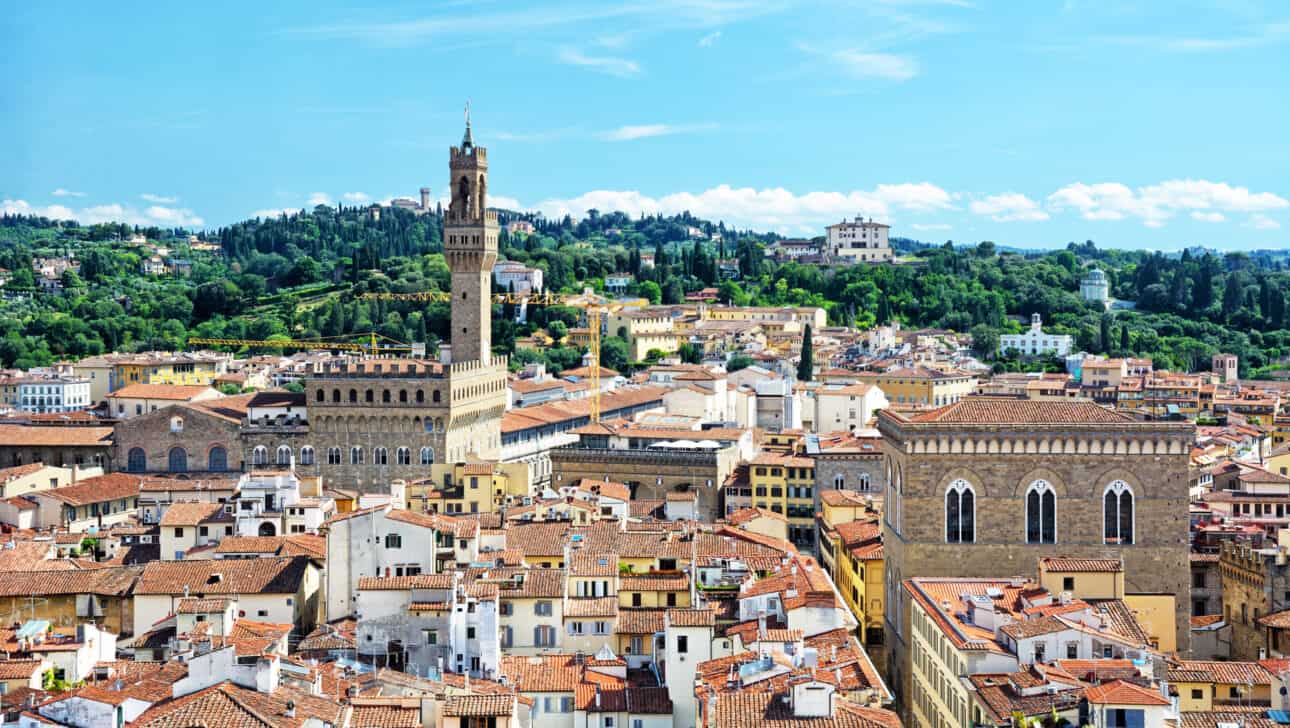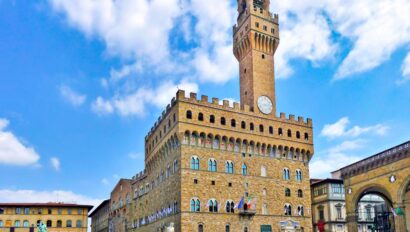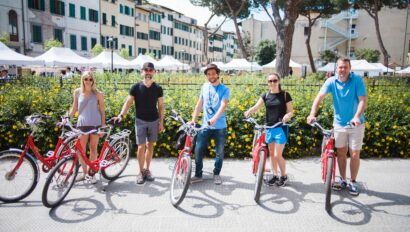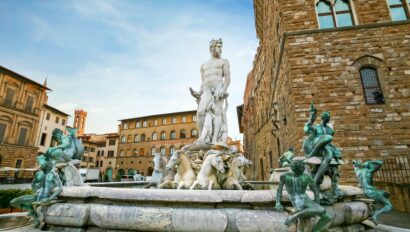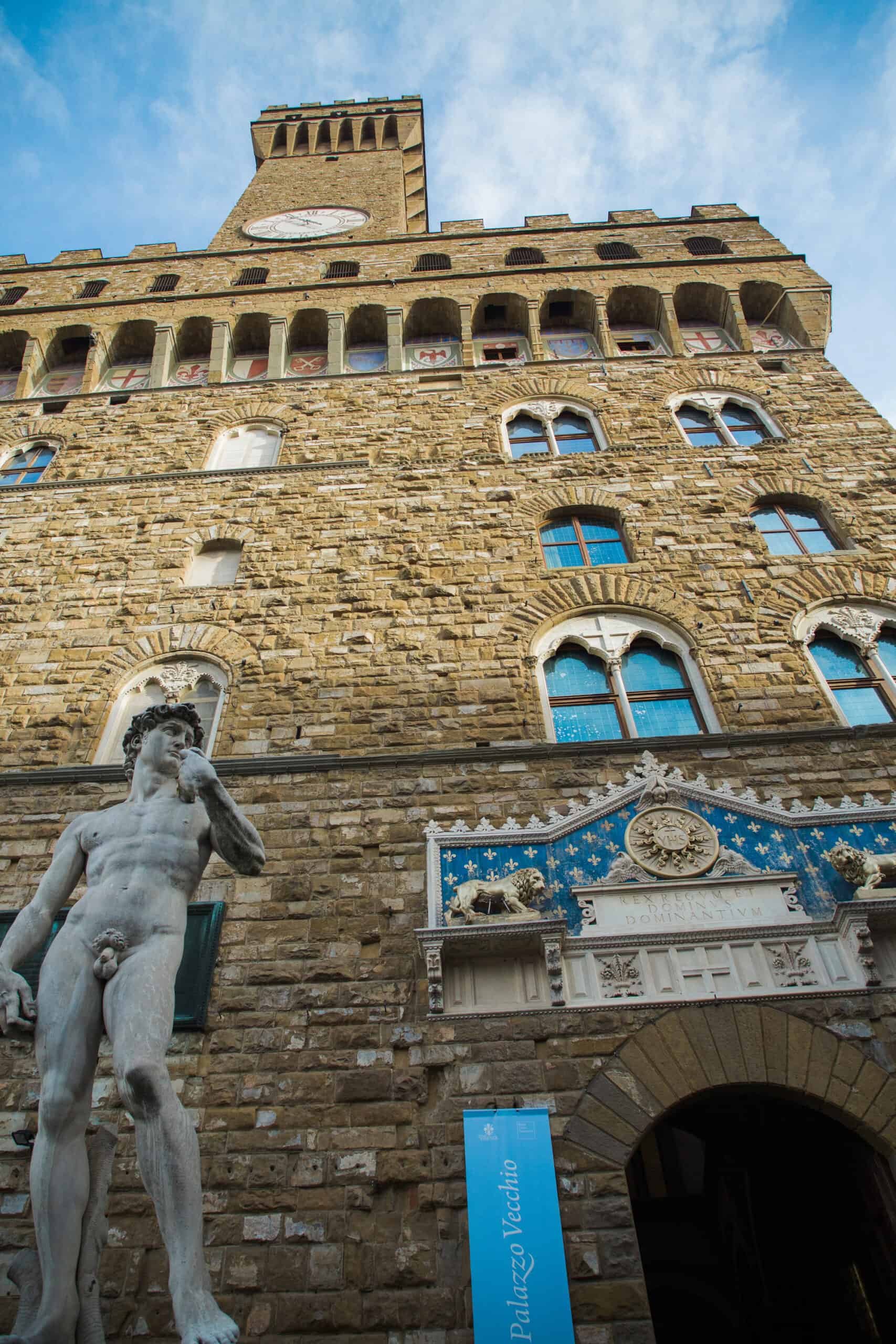
Palazzo Vecchio
See the Palazzo Vecchio
Florence’s Town Hall, Palazzo Vecchio, dates back to the thirteenth century and is a must-see on your trip to Firenze. The original structure was designed by Arnolfo di Cambio, who famously also designed Santa Maria del Fiore, more commonly known as il Duomo, or the Florence Cathedral. Originally named Palazzo della Signoria after the ruling local government of Florence, the name was updated to Palazzo Vecchio when the Medici Family moved to the Renaissance-era Palazzo Pitti across the Arno River.
Between 1504 and 1873, Michelangelo’s David sculpture stood at the entrance before it was moved to the nearby Accademia Gallery. The entrance is now flanked by a replica of Michelangelo’s David and Bartolommeo Bandinelli’s Hercules and Cacus, on either side of the the marble archway. Inside the museum, there are countless works of art including Italian Renaissance pieces such as The Crossing of the Red Sea by Agnolo Bronzino and the Birth of Venus by Giorgio Vasari. You can find some of the most impressive art in the Palazzo Vecchio inside the Salone dei Cinquecento, the largest room in the building.
From art to politics, Florence’s Town Hall has seen its fair share of political turmoil as well. One of the commissioners (and the hall’s namesake), Fra Girolamo Savonarola, was responsible for ousting the ruling Medici family for a short period of time and establishing a new government in Florence. Savonarola was later arrested, hanged, and burned at the stake just outside in the Piazza della Signoria. Be on the lookout for a memorial plaque on the ground during your visit. Cosimo de Medici was imprisoned inside the Palazzo Vecchio in 1433 for his failure to conquer the Republic of Lucca.
Florence Tours
